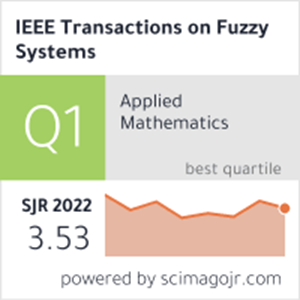联合连通有向图下基于事件的无人机群模糊异步一致性
IF 11.9
1区 计算机科学
Q1 COMPUTER SCIENCE, ARTIFICIAL INTELLIGENCE
引用次数: 0
摘要
针对联合连接切换拓扑下的固定翼无人机机队,提出了一种自适应模糊动态事件触发控制方法。主要的挑战在于解决由拓扑识别延迟引起的异步交换拓扑。为此,构造了异步分布式观测器,设计了拓扑切换规则,确保所有跟随无人机都能利用异步分布式状态误差来估计领头无人机的状态。此外,还提出了一种新的动态事件触发机制。与现有的触发方法相比,所提出的触发函数将外部状态变量与最后一个触发值直接耦合,根据控制性能动态调节触发间隔,在保持系统性能的前提下,使触发次数最小化。进一步开发了一种自适应模糊平移旋转控制器,使跟随无人机能够准确跟踪领头无人机的状态,同时确保所有闭环状态保持全局一致最终有界。通过半物理仿真平台验证了所提策略的有效性和优越性。本文章由计算机程序翻译,如有差异,请以英文原文为准。
Event-Based Fuzzy Asynchronous Consensus for UAV Swarm Under Jointly Connected Digraphs
An adaptive fuzzy dynamic event-triggered control approach is proposed for a fleet of fixed-wing unmanned aerial vehicles (UAVs) operating under jointly connected switching topologies. The primary challenge lies in addressing asynchronous switching topologies caused by topology identification delays. To tackle this, asynchronous distributed observers are constructed, and topological switching rules are designed, ensuring that all follower UAVs can estimate the leader UAV’s state by leveraging asynchronous distributed state errors. In addition, a novel dynamic event-triggering mechanism is introduced. Compared to state-of-the-art methods, the proposed triggering function directly couples the external state variable with the last triggered value, dynamically regulates the triggered interval based on the control performance, and minimizes the number of occurrences while maintaining the system performance. An adaptive fuzzy translational and rotational controller is further developed to enable the follower UAVs to accurately track the state of the leader UAV while ensuring that all closed-loop states remain globally uniformly ultimately bounded. The proposed strategies are validated for effectiveness and superiority through a semiphysical simulation platform.
求助全文
通过发布文献求助,成功后即可免费获取论文全文。
去求助
来源期刊

IEEE Transactions on Fuzzy Systems
工程技术-工程:电子与电气
CiteScore
20.50
自引率
13.40%
发文量
517
审稿时长
3.0 months
期刊介绍:
The IEEE Transactions on Fuzzy Systems is a scholarly journal that focuses on the theory, design, and application of fuzzy systems. It aims to publish high-quality technical papers that contribute significant technical knowledge and exploratory developments in the field of fuzzy systems. The journal particularly emphasizes engineering systems and scientific applications. In addition to research articles, the Transactions also includes a letters section featuring current information, comments, and rebuttals related to published papers.
 求助内容:
求助内容: 应助结果提醒方式:
应助结果提醒方式:


